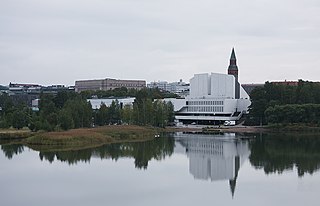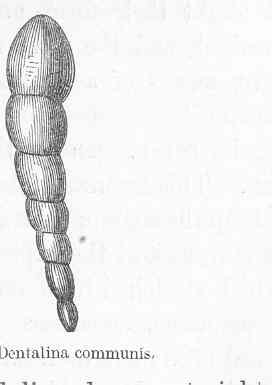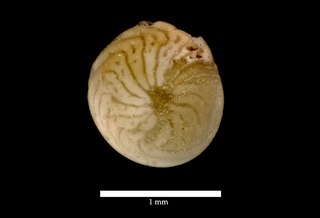Related Research Articles

Disk storage is a general category of storage mechanisms where data is recorded by various electronic, magnetic, optical, or mechanical changes to a surface layer of one or more rotating disks. A disk drive is a device implementing such a storage mechanism. Notable types are the hard disk drive (HDD) containing a non-removable disk, the floppy disk drive (FDD) and its removable floppy disk, and various optical disc drives (ODD) and associated optical disc media.
A lens is a transmissive optical device that focuses or disperses a light beam by means of refraction. A simple lens consists of a single piece of transparent material, while a compound lens consists of several simple lenses (elements), usually arranged along a common axis. Lenses are made from materials such as glass or plastic and are ground, polished, or molded to the required shape. A lens can focus light to form an image, unlike a prism, which refracts light without focusing. Devices that similarly focus or disperse waves and radiation other than visible light are also called "lenses", such as microwave lenses, electron lenses, acoustic lenses, or explosive lenses.

A microscope is a laboratory instrument used to examine objects that are too small to be seen by the naked eye. Microscopy is the science of investigating small objects and structures using a microscope. Microscopic means being invisible to the eye unless aided by a microscope.

A mirror or looking glass is an object that reflects an image. Light that bounces off a mirror will show an image of whatever is in front of it, when focused through the lens of the eye or a camera. Mirrors reverse the direction of the image in an equal yet opposite angle from which the light shines upon it. This allows the viewer to see themselves or objects behind them, or even objects that are at an angle from them but out of their field of view, such as around a corner. Natural mirrors have existed since prehistoric times, such as the surface of water, but people have been manufacturing mirrors out of a variety of materials for thousands of years, like stone, metals, and glass. In modern mirrors, metals like silver or aluminium are often used due to their high reflectivity, applied as a thin coating on glass because of its naturally smooth and very hard surface.

In biology, tissue is a historically derived biological organizational level between cells and a complete organ. A tissue is therefore often thought of as an assembly of similar cells and their extracellular matrix from the same embryonic origin that together carry out a specific function. Organs are then formed by the functional grouping together of multiple tissues.

Birefringence is the optical property of a material having a refractive index that depends on the polarization and propagation direction of light. These optically anisotropic materials are said to be birefringent. The birefringence is often quantified as the maximum difference between refractive indices exhibited by the material. Crystals with non-cubic crystal structures are often birefringent, as are plastics under mechanical stress.

Op art, short for optical art, is a style of visual art that uses optical illusions.

Victor Vasarely was a Hungarian-French artist, who is widely accepted as a "grandfather" and leader of the Op art movement.

Laser ablation or photoablation is the process of removing material from a solid surface by irradiating it with a laser beam. At low laser flux, the material is heated by the absorbed laser energy and evaporates or sublimates. At high laser flux, the material is typically converted to a plasma. Usually, laser ablation refers to removing material with a pulsed laser, but it is possible to ablate material with a continuous wave laser beam if the laser intensity is high enough. While relatively long laser pulses can heat and thermally alter or damage the processed material, ultrashort laser pulses cause only minimal material damage during processing due to the ultrashort light-matter interaction and are therefore also suitable for micromaterial processing. Excimer lasers of deep ultra-violet light are mainly used in photoablation; the wavelength of laser used in photoablation is approximately 200 nm.

The Finlandia Hall is a congress and event venue in the centre of Helsinki on the Töölönlahti Bay, owned by the City of Helsinki. The building, which was designed by architect Alvar Aalto, was completed in 1971. Every detail in the building is designed by Aalto. The designs were completed in 1962, with building taking place between 1967 and 1971. The Congress Wing was designed in 1970 and built in 1973–1975. In 2011, the building was expanded with new exhibition and meeting facilities. Finlandia Hall is known as the venue for the OSCE Summit held in August 1975, attended by 35 world leaders, including the leader of the Soviet Union, Leonid Brezhnev, and the President of the United States, Gerald Ford.

Samarium(III) oxide (Sm2O3) is a chemical compound. Samarium oxide readily forms on the surface of samarium metal under humid conditions or temperatures in excess of 150°C in dry air. Similar to rust on metallic iron, this oxide layer spalls off the surface of the metal, exposing more metal to continue the reaction. The oxide is commonly white to off yellow in color and is often encountered as a highly fine dust like powder.

A curved mirror is a mirror with a curved reflecting surface. The surface may be either convex or concave. Most curved mirrors have surfaces that are shaped like part of a sphere, but other shapes are sometimes used in optical devices. The most common non-spherical type are parabolic reflectors, found in optical devices such as reflecting telescopes that need to image distant objects, since spherical mirror systems, like spherical lenses, suffer from spherical aberration. Distorting mirrors are used for entertainment. They have convex and concave regions that produce deliberately distorted images. They also provide highly magnified or highly diminished (smaller) images when the object is placed at certain distances.
A glaze is a thin transparent or semi-transparent layer on a painting which modifies the appearance of the underlying paint layer. Glazes can change the chroma, value, hue and texture of a surface. Glazes consist of a great amount of binding medium in relation to a very small amount of pigment. Drying time will depend on the amount and type of paint medium used in the glaze. The medium, base, or vehicle is the mixture to which the dry pigment is added. Different media can increase or decrease the rate at which oil paints dry.

Translucent concrete is a concrete based building material with light-transmissive properties due to embedded light optical elements — usually optical fibers. Light is conducted through the stone from one end to the other. Therefore, the fibers have to go through the whole object. This results in a certain light pattern on the other surface, depending on the fiber structure. Shadows cast onto one side appear as silhouettes through the material.

A lesene, also called a pilaster strip, is an architectural term for a narrow, low-relief vertical pillar on a wall. It resembles a pilaster, but does not have a base or capital. It is typical in Lombardic and Rijnlandish architectural building styles.

Lagenida is an order of benthic foraminiferal protists in which the tests (shells) are monolamellar, with walls composed of optically and ultra-structurally radiate calcite, with the crystallographic c-axes perpendicular to the surface. Lagenids first appear in the Upper Silurian and continue to the Recent. They are currently divided into two superfamilies, the older Robuloidacea which range from the Upper Silurian to the Lower Cretaceous (Albian) and the younger Nodosariacea, ranging from the Permian to Recent.
Discorbis is a genus of benthic Foraminifera, that made its first appearance during the Eocene. Its present distribution is cosmopolitan.
The Globoroatioidea constitutes a superfamily of Cenozoic plantonic foraminifera. It is part of the suborder Globigerinina. Globoroatioidea have trochospiral tests with rounded to carinate peripheries, the walls of which are of finely lamellar, perforate, of optically radial calcite, with an inner organic lining. The surface of these tests is smooth, lacking spines, but may be covered with pustules or pitted, and may have one or more large pores at the center. There is a single primary aperture that may be bordered by an imperforate lip, as well as possible supplementary apertures.

Amphistegina is a genus of foraminiferal protists included in the Rotaliida with a stratigraphic range extending from the Eocene to recent and a cosmopolitan distribution. The test is an asymmetrically biconvex trochospiral that may be bi-involute or partially evolute on the spiral side. Chambers are numerous, broad. and low, strongly curved back at the periphery to form chamber prolongations. The umbilical side is stellate, like that of Asterigerina, and has a distinct umbilical plug. The wall is calcareous, optically radial; the surface finely perforate and smooth overall. The periphery angular to carinate (keeled); the aperture an interiomarginal slit on the umbilical side, bordered by a lip.
The Lincoln Calibration Sphere 1, or LCS-1, is a large aluminium sphere in Earth orbit since 6 May 1965. It is still in use, having lasted for over 50 years. The sphere was launched along with the Lincoln Experimental Satellite-2 on a Titan IIIA. It is technically the oldest operational spacecraft, but it has no power supply or fuel; it is merely a passive metal sphere. LCS-1 has been used for radar calibration since its launch. It was built by Rohr. Corp. for the MIT Lincoln Laboratory.
References
- Alfred R. Loeblich, jr. and Helen Tappan, 1964. Sarcodina, chiefly "Thecamoebians" and Foraminiferida. Treatise on Invertebrate Paleontology, Part C, Protista 2. Geological Society of America and University of Kansas Press, 1964.
- ___ and ____, 1988. Forminiferal Genera and their classification.